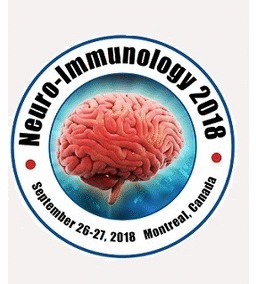International Conference on Neuroimmunology, Neurological disorders and Neurogenetics
Montreal, Canada

Alina Piekarek
Wrocław University Hospital, Poland
Title: Neurodegeneration in glaucoma- MR Imaging of the brain and the visual pathway changes
Biography
Biography: Alina Piekarek
Abstract
This review discusses the glaucomatous degeneration of the brain and the optic pathways detected in MR Imaging. Glaucoma is heterogenous condition causes gradual vision loss associated with the optic pathways damage. The neuropathological mechanisms are not clear. By assessment of the brain using high resolution techniques of magnetic resonance imaging, detailed structural and functional changes can be detected in glaucoma patients. MRI enables the entire visual pathway evaluation, from the optic nerves to the occipital cortex.
Tractography based on diffusion tensor imaging (DTI) and diffusion kurtosis imaging (DKI) can be used to discriminating optic pathway fibers. Diffusion parameters from voxels along of the visual pathway allow to quantitative evaluation of the white matter disintegration. The problem of the crossing fibers, acquisition time, multiparametric analysis, prechiasmatic and postachiasmatic fibers and the spatial resolution artifacts will be discussed by showing examples from my running researches.
High resolution 3D volumetric MR sequences provide the information of cortical glaucomatous reduction, which can be calculate from Brodmann’s areas of the visual cortex. The occipital cortex activity is detected using functional MRI (fMRI) techniques by monocular or biocular stimulation. The certain aspects of fMRI and voxel- based volumetry will be elaborated.The neuro-ophthalmological entities, which can mimic glaucoma will be reviewed and considered based on cases from my Department.Magnetic resonance imaging (MRI) characterizes the glaucomatous neuropathy by detecting the brain changes along the optic pathways.

